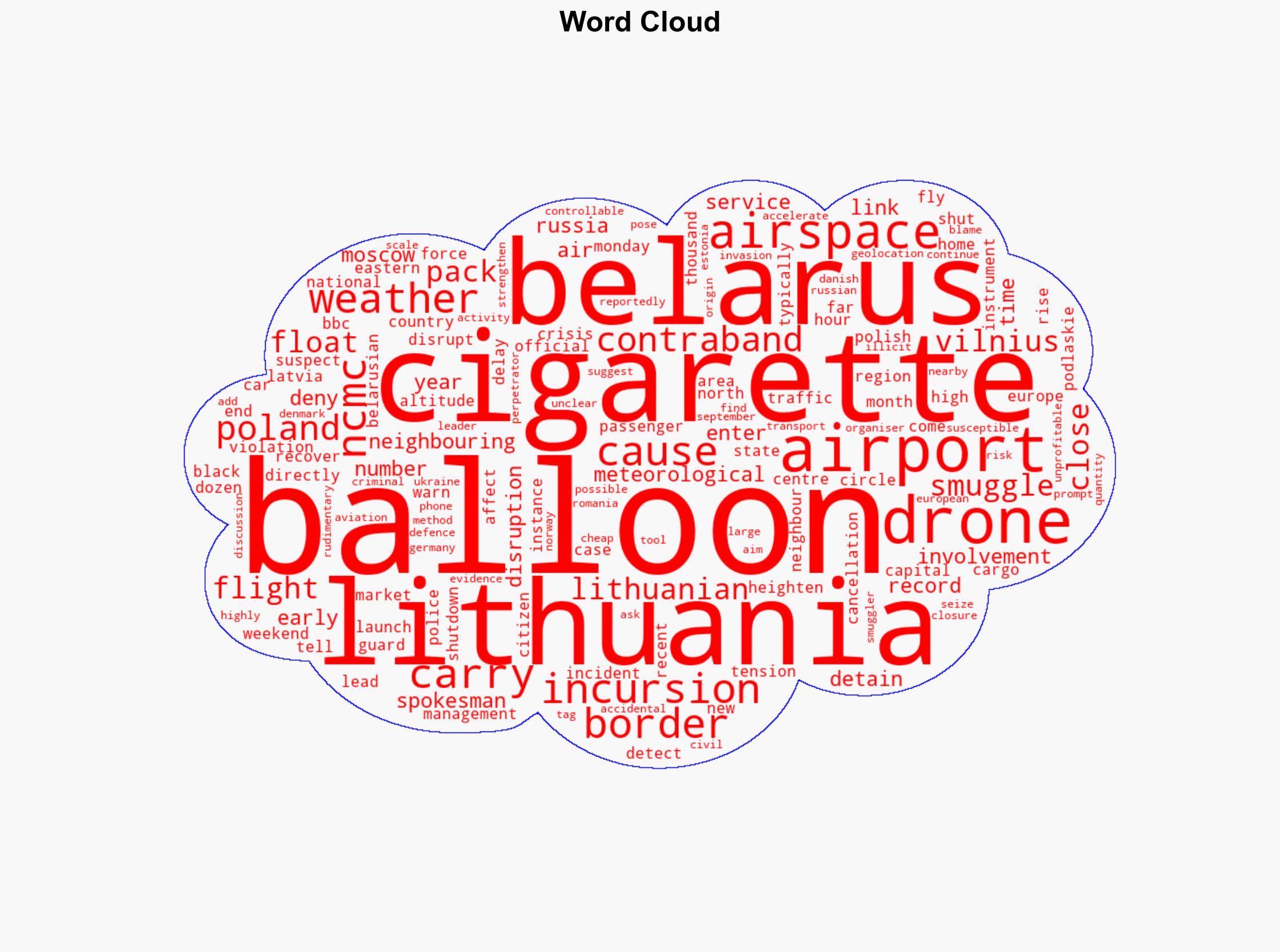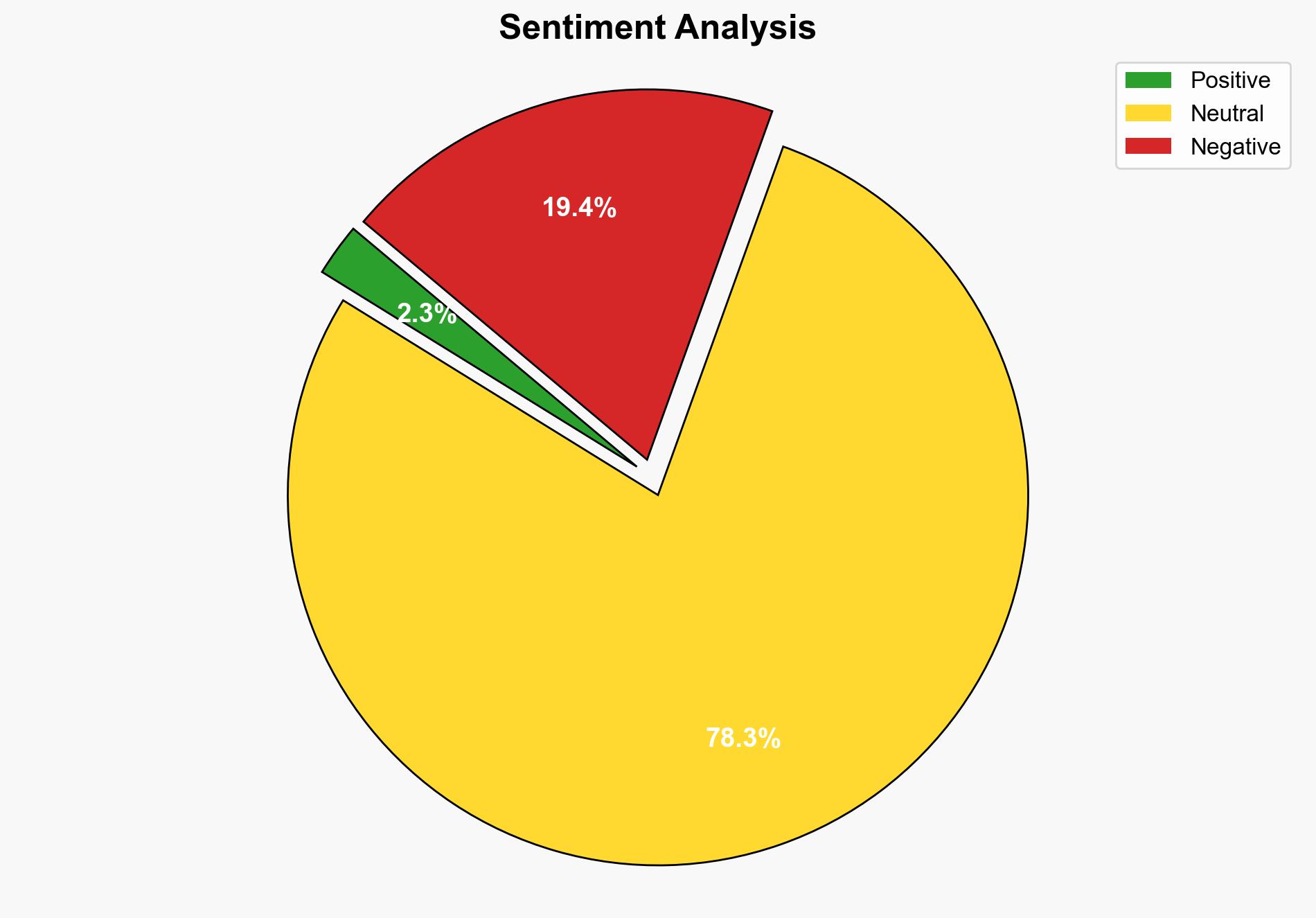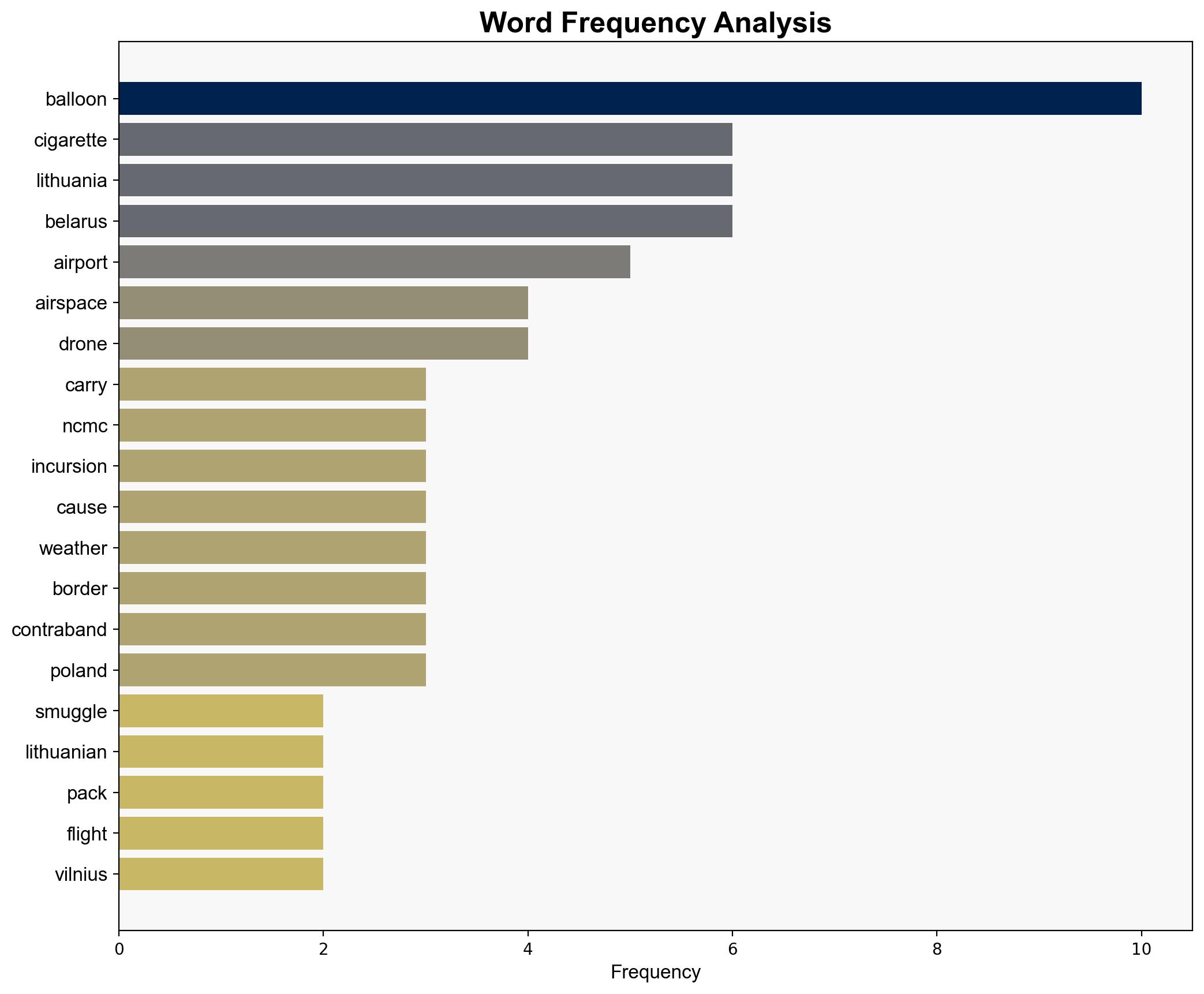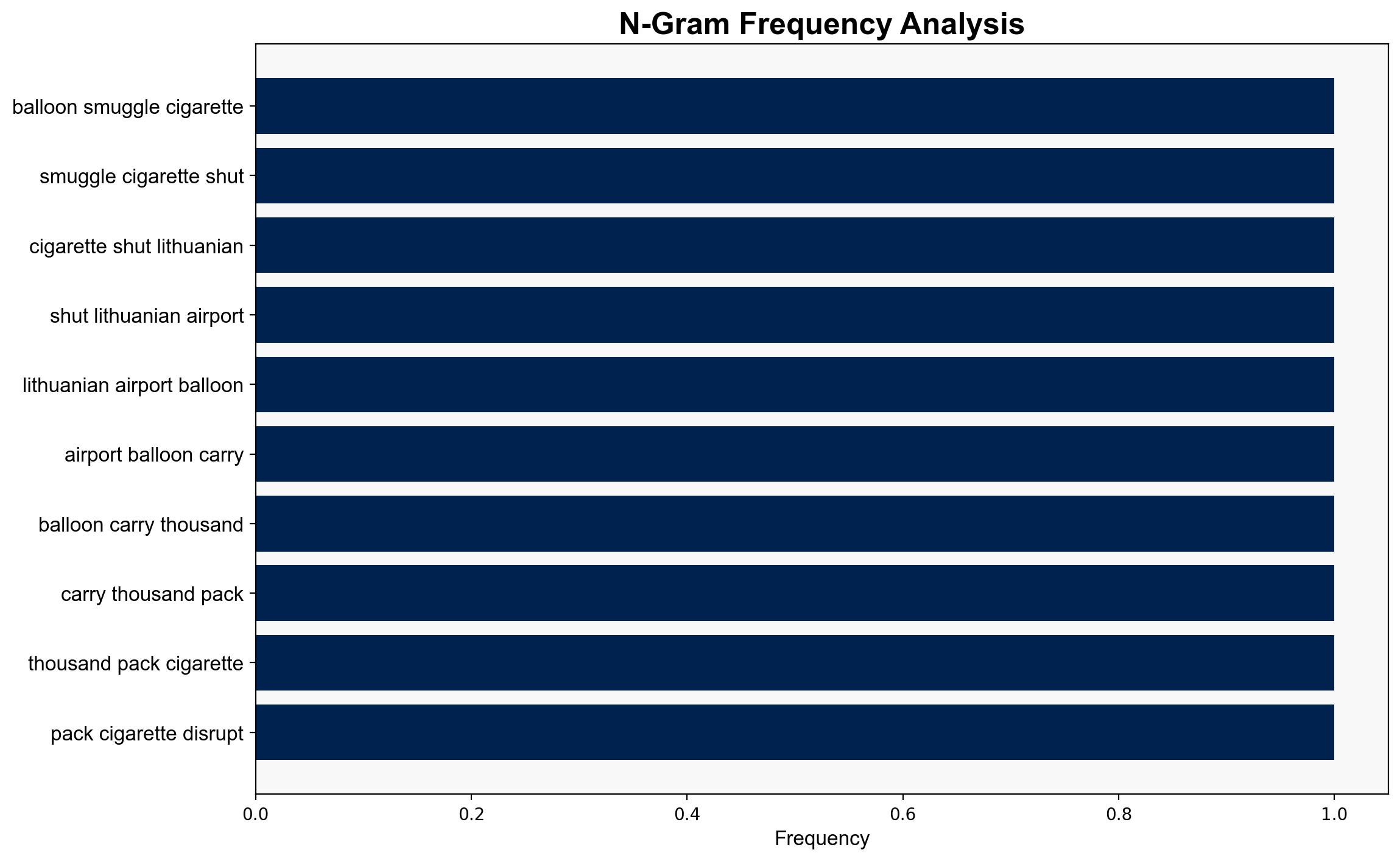Balloons used to smuggle cigarettes shut Lithuanian airport – BBC News
Published on: 2025-10-06
Intelligence Report: Balloons used to smuggle cigarettes shut Lithuanian airport – BBC News
1. BLUF (Bottom Line Up Front)
The most supported hypothesis is that the balloon incident is primarily a smuggling operation with secondary implications for regional security. Confidence level is moderate due to the complexity of the geopolitical context. Recommended actions include enhancing airspace monitoring and international cooperation to address both smuggling and potential security threats.
2. Competing Hypotheses
1. **Hypothesis A**: The balloons were used solely for smuggling cigarettes, exploiting the porous border and airspace vulnerabilities between Belarus and Lithuania. This hypothesis suggests a focus on economic gain through contraband.
2. **Hypothesis B**: The balloon incident is a deliberate provocation or test by a state actor, potentially linked to Russia, to assess airspace defenses and create regional instability. This could be a part of broader hybrid warfare tactics.
Using ACH 2.0, Hypothesis A is better supported by the available evidence, such as the historical use of balloons for smuggling and the recovery of contraband. Hypothesis B lacks direct evidence but aligns with regional tensions and previous airspace violations.
3. Key Assumptions and Red Flags
– **Assumptions**: Hypothesis A assumes that economic motives are the primary driver, while Hypothesis B assumes a strategic intent behind the airspace violation.
– **Red Flags**: The timing of the incident amidst heightened regional tensions could indicate a dual-purpose operation. The lack of direct evidence linking state actors to the incident is a significant gap.
– **Blind Spots**: Potential underestimation of the sophistication and intent of the smuggling networks or state actors involved.
4. Implications and Strategic Risks
– **Economic**: Continued smuggling could undermine local economies and border security.
– **Geopolitical**: Repeated airspace violations could escalate tensions between NATO and Russia, particularly if linked to state actors.
– **Psychological**: Public perception of security vulnerabilities could erode trust in governmental capabilities.
– **Cascading Threats**: Increased use of unconventional methods for smuggling and potential hybrid warfare tactics could destabilize the region.
5. Recommendations and Outlook
- Enhance airspace surveillance and response capabilities, focusing on unconventional threats like balloons and drones.
- Strengthen international cooperation and intelligence sharing to address cross-border smuggling and potential state-sponsored activities.
- Scenario Projections:
- **Best Case**: Improved border security and international collaboration reduce smuggling and deter state provocations.
- **Worst Case**: Escalation of airspace violations leads to regional conflict or significant economic disruption.
- **Most Likely**: Continued low-level smuggling with periodic provocations, requiring sustained vigilance and adaptive strategies.
6. Key Individuals and Entities
No specific individuals are mentioned in the source text. Entities involved include the Lithuanian National Crisis Management Centre and the Lithuanian State Border Guard Service.
7. Thematic Tags
national security threats, cybersecurity, counter-terrorism, regional focus





